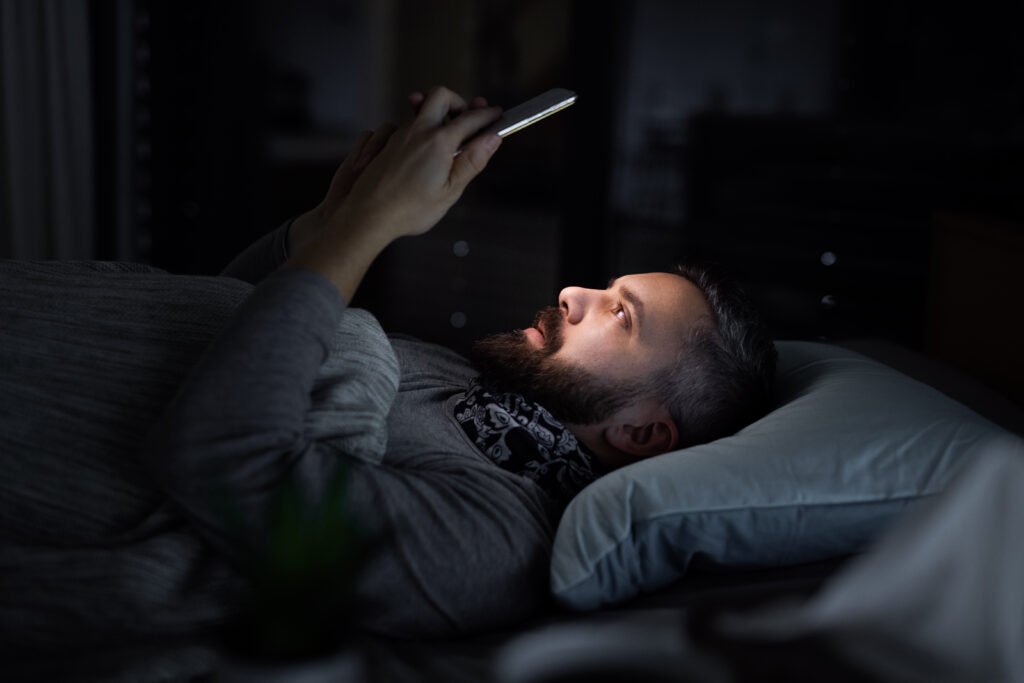
Sleep Quality: Can Dark Mode Help You Sleep Better?
The Dark Side of Dark Mode: Are You Making the Most of It?
You’ve probably noticed that dark mode has become the go-to feature on a ton of apps and social media platforms lately. At first, it seemed like a stylish way to change things up while offering some pretty nice user benefits. But recently, the buzz around dark mode is starting to shift. While many folks firmly believe in its perks, some studies are suggesting that those benefits might not be as great as we thought. Let’s chat about some common misconceptions, look at the science behind them, and dig into practical tips that can help you develop healthier screen habits.
Let’s Talk Legibility: Bright vs. Dark Backgrounds
One of the most appealing claims about dark mode is that it improves how easily we can read text. But guess what? Research suggests otherwise. Eye care pros say our eyes are actually wired to read dark text against a bright background more effectively. When we flip that and read light text on a dark screen, it can actually be a bit tougher on our peepers.
Here’s why: when we look at bright backgrounds, our pupils get smaller, making it easier to focus. On the flip side, dark text on a light background has our pupils widening, which can cause some strain—and none of us want that, right?
Quick Tips for Your Eyes
– Try Switching It Up: If dark mode gives you a headache during the day, give light mode a shot until evening—and then switch back to dark when it’s nighttime.
– Play with Text Settings: Don’t hesitate to bump up the text size and tweak the contrast settings too. It can help reduce that eye strain, whether you’re team light mode or dark.
Battery Life: Is Dark Mode Really Saving You Juice?
One of the biggest selling points of dark mode is that it’s supposed to save battery life, particularly on OLED screens. While some studies suggest you can squeeze out anywhere from 39% to 47% more battery at max brightness, that’s when everything is perfect. In real life? Not so much. For the average tasks we all do, those battery savings can be pretty minimal.
A study from Purdue University found that under everyday conditions—where screen brightness varies and different tasks are happening—most users don’t really see a significant change in battery life from using dark mode.
Battery-Saving Hacks
– Watch Your Brightness: Rather than relying solely on dark mode, pay attention to your screen brightness. Adjust it based on your surroundings for better power management.
– Activate Battery-Saving Features: Many devices come packed with additional battery-saving tools. Activate the low power mode to give your device an extra boost.
Sleep Quality: Can Dark Mode Help You Sleep Better?
Another frequently heard benefit of dark mode is that it helps lower blue light exposure, promoting better sleep. But science is not all that convinced. Experts believe that issues linked to blue light may have more to do with how often we blink while staring at screens, rather than just how bright they are.
Sleep Tips for Better Zzz’s
– Create a Digital Curfew: To really support your sleep, aim to cut down on screen time at least an hour before bed. Try picking up a physical book or engaging in some relaxing activities to help you wind down.
– Consider Blue Light Filters: If you must be on your screen before bed, look into software or apps that filter out blue light, in addition to cutting back on your general screen time.
The Mental Side of Dark Mode: How It Affects Your Mind
Now, here’s something that might surprise you: dark mode could be messing with our mental well-being too. Some early findings suggest that younger users might be spending more time on apps that offer dark mode, which often leads to increased screen time overall. That extra time can stir up anxiety and feelings of depression.
Ways to Maintain Mental Balance
– Build Mindful Tech Habits: Think about setting timers for how long you use certain apps or taking regular breaks throughout your day. There are apps out there designed to help you track screen time or set limits.
– Enjoy Offline Activities: Consider swapping some screen time for offline hobbies that bring you joy—whether it’s hanging out with friends, starting a new project, or simply enjoying the outdoors.
How to Make This Work for You
Ready to put these insights into action? Here’s a simple roadmap to follow:
1. Check In with Yourself: Take a minute to reflect on your daily screen habits and decide if dark mode is genuinely working for you.
2. Experiment a Bit: Try flipping between light and dark modes during various activities. Pay attention to how your eyes feel, how much time you’re spending on screens, and how it might impact your sleep and mood.
3. Cultivate Healthy Habits: Aim for a digital vibe that enhances your life instead of bringing stress. Incorporate tools and routines that support your eye health and mental clarity.
Wrapping It Up
While dark mode might feel like a trendy feature you can’t live without, it’s important to recognize that its benefits may be overstated. Understanding potential downsides—like how it can strain your eyes, offer only slight battery savings, have questionable sleep benefits, and affect your mental state—can help you make smarter choices about how to use your devices. So next time you find yourself switching on dark mode, take a moment to think about how it’s really affecting your experience. Let’s prioritize our well-being in this digital age.
I’d love to hear your thoughts about dark mode! Have you discovered what works best for you? Your stories could really help others on their tech journeys. Drop a comment below and let’s chat!
Hashtags: #dark #mode #screen #light #battery #time #some #help #sleep #about #text #apps #while #might #life
